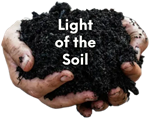We will discuss the importance of composting in sustainable agriculture, the nutrient content of common garden vegetables, and how composting can enhance soil fertility. Additionally, we will examine the factors that influence nutrient content in compost and provide practical recommendations for optimizing compost quality.
1. Introduction
Composting is a natural process that transforms organic matter into a nutrient-rich soil amendment. Gardeners have long recognized the benefits of composting, as it allows them to recycle kitchen scraps, yard waste, and other organic materials while improving soil fertility and structure. This paper focuses on the nutrient content of compost derived from various garden vegetables and its significance in sustainable agriculture.
2. Importance of Composting in Sustainable Agriculture
Composting plays a crucial role in sustainable agriculture for several reasons:
2.1. Organic Waste Reduction: Composting helps divert organic waste from landfills, reducing methane emissions and conserving landfill space.
2.2. Soil Enrichment: Compost improves soil structure, enhances water retention, and increases nutrient availability to plants, ultimately leading to healthier crops.
2.3. Reduced Chemical Inputs: The use of compost can reduce the need for synthetic fertilizers and pesticides, minimizing environmental pollution.
2.4. Carbon Sequestration: Composting contributes to carbon sequestration by converting organic matter into stable humus, which can help mitigate climate change.
3. Nutrient Content of Common Garden Vegetables
Different garden vegetables have varying nutrient requirements and contribute differently to compost when added as organic matter. Here, we will explore the nutrient content of several common garden vegetables:
3.1. Leafy Greens (e.g., Lettuce, Spinach):
- Rich in nitrogen, essential for plant growth.
- Contain moderate amounts of phosphorus and potassium.
- Provide trace minerals like iron and calcium.
3.2. Root Vegetables (e.g., Carrots, Beets):
- Good sources of carbohydrates and sugars.
- Relatively low in nitrogen but still contribute organic matter.
3.3. Legumes (e.g., Peas, Beans):
- Nitrogen-fixing plants that increase soil nitrogen content.
- Also contribute organic matter to compost.
3.4. Brassicas (e.g., Broccoli, Cabbage):
- Moderate nitrogen content.
- Contain sulfur compounds that can benefit soil health.
3.5. Nightshades (e.g., Tomatoes, Peppers):
- Rich in potassium, an important nutrient for flowering and fruiting.
- Provide organic matter when their vines and leaves are composted.
4. Compost Nutrient Composition
The nutrient content of compost varies depending on the materials used and the composting process. Compost typically contains the following essential nutrients for plant growth:
4.1. Nitrogen (N): Crucial for vegetative growth and protein synthesis in plants.
4.2. Phosphorus (P): Essential for root development, flowering, and fruiting.
4.3. Potassium (K): Promotes overall plant health, disease resistance, and stress tolerance.
4.4. Micronutrients: Compost may also contain trace elements like iron, manganese, copper, and zinc, which are necessary for various plant functions.
5. Factors Influencing Compost Nutrient Content
Several factors can influence the nutrient content of compost:
5.1. Feedstock Materials: The types and ratios of organic materials used in composting affect nutrient levels. Mixing diverse materials ensures a balanced nutrient profile.
5.2. Carbon-to-Nitrogen Ratio (C:N): A balanced C:N ratio (usually around 25-30:1) ensures efficient decomposition and nutrient retention.
5.3. Composting Method: Different composting methods (e.g., hot composting, vermicomposting) may alter nutrient availability and microbial activity.
5.4. Curing Period: Allowing compost to cure or mature for several months enhances nutrient stability.
6. Practical Recommendations for Optimizing Compost Quality
To maximize the nutrient content and quality of compost, gardeners should consider the following tips:
6.1. Use a Variety of Feedstock Materials: Combine kitchen scraps, yard waste, and diverse plant materials to create balanced compost.
6.2. Maintain Proper C:N Ratio: Monitor the carbon-to-nitrogen ratio to promote efficient decomposition.
6.3. Turn and Aerate: Regularly turn the compost pile to provide oxygen for microbial activity and even decomposition.
6.4. Moisture Management: Keep compost moist, like a wrung-out sponge, to support microbial growth.
6.5. Allow for Adequate Curing: Let compost cure for 3-6 months to stabilize nutrients and reduce the risk of phytotoxicity.
7. Conclusion
Composting garden vegetables is a sustainable practice that not only reduces organic waste but also creates valuable nutrient-rich compost. Understanding the nutrient content of various garden vegetables and the factors influencing compost quality is essential for gardeners seeking to optimize soil fertility and plant health. By following best practices for composting, gardeners can harness the power of organic matter to promote sustainable and productive gardening. Light of the Soil, LLC uses all plant scrap such pumpkin and squash plants to make nutrient rich soil amendments through the vermicompost process.
